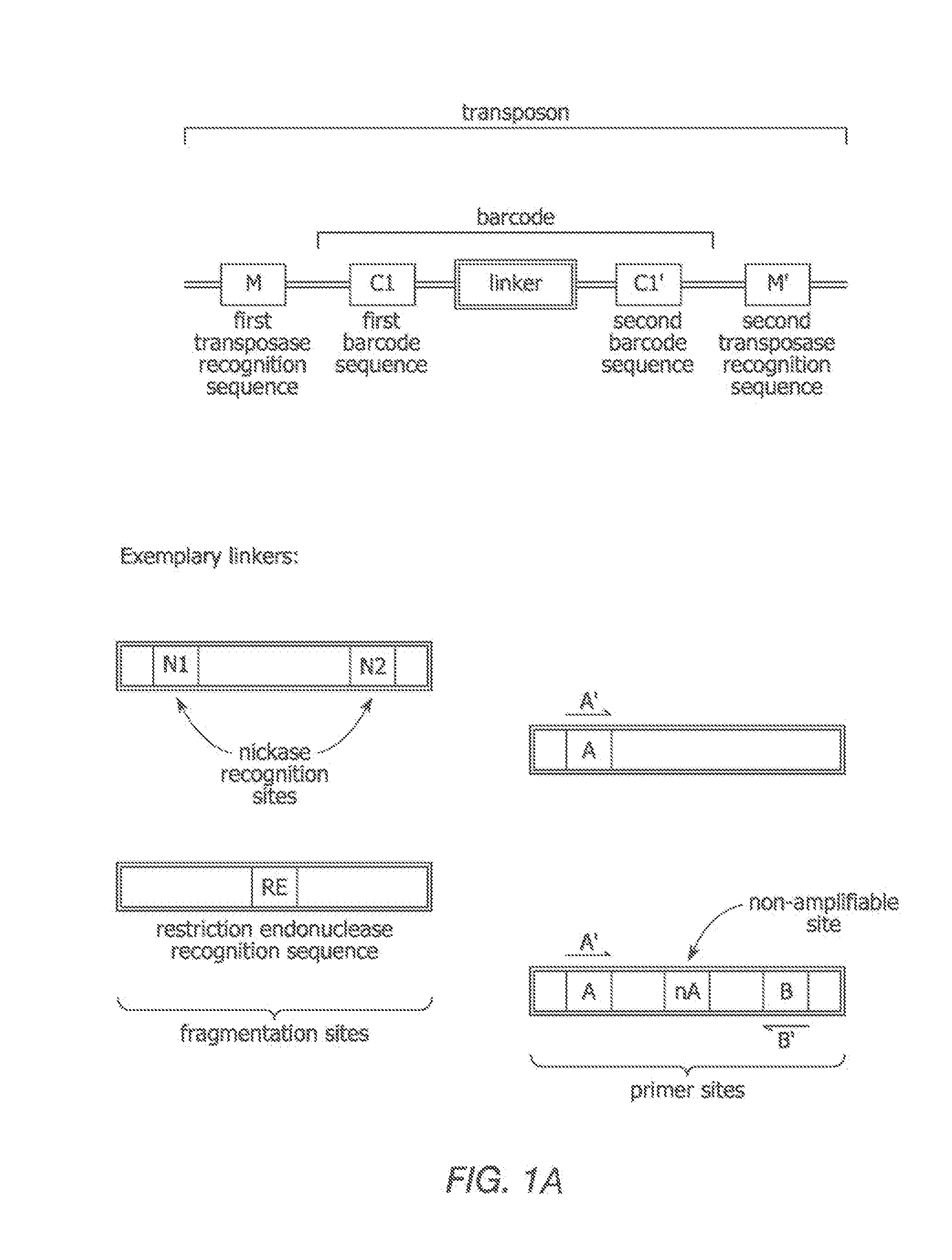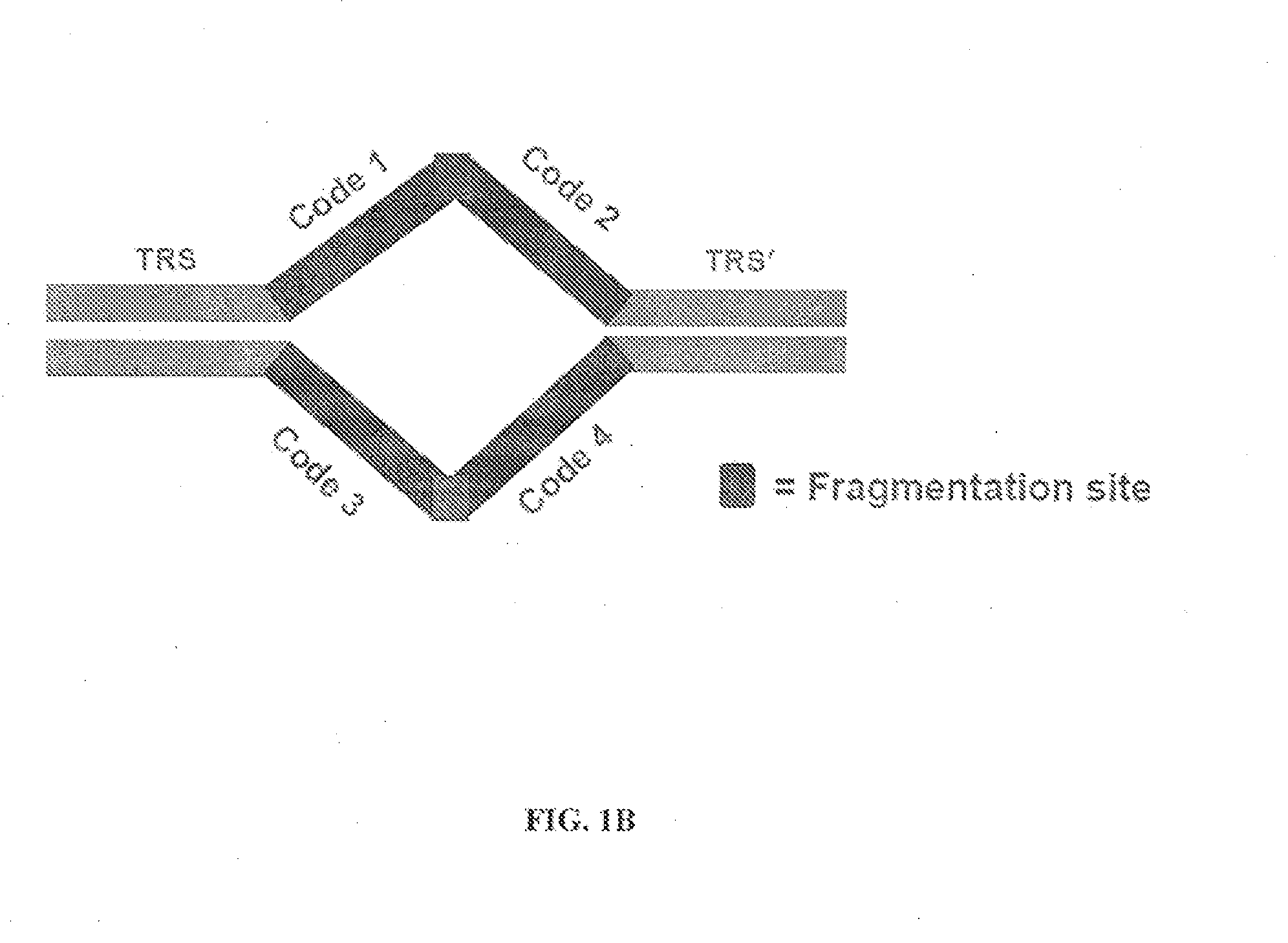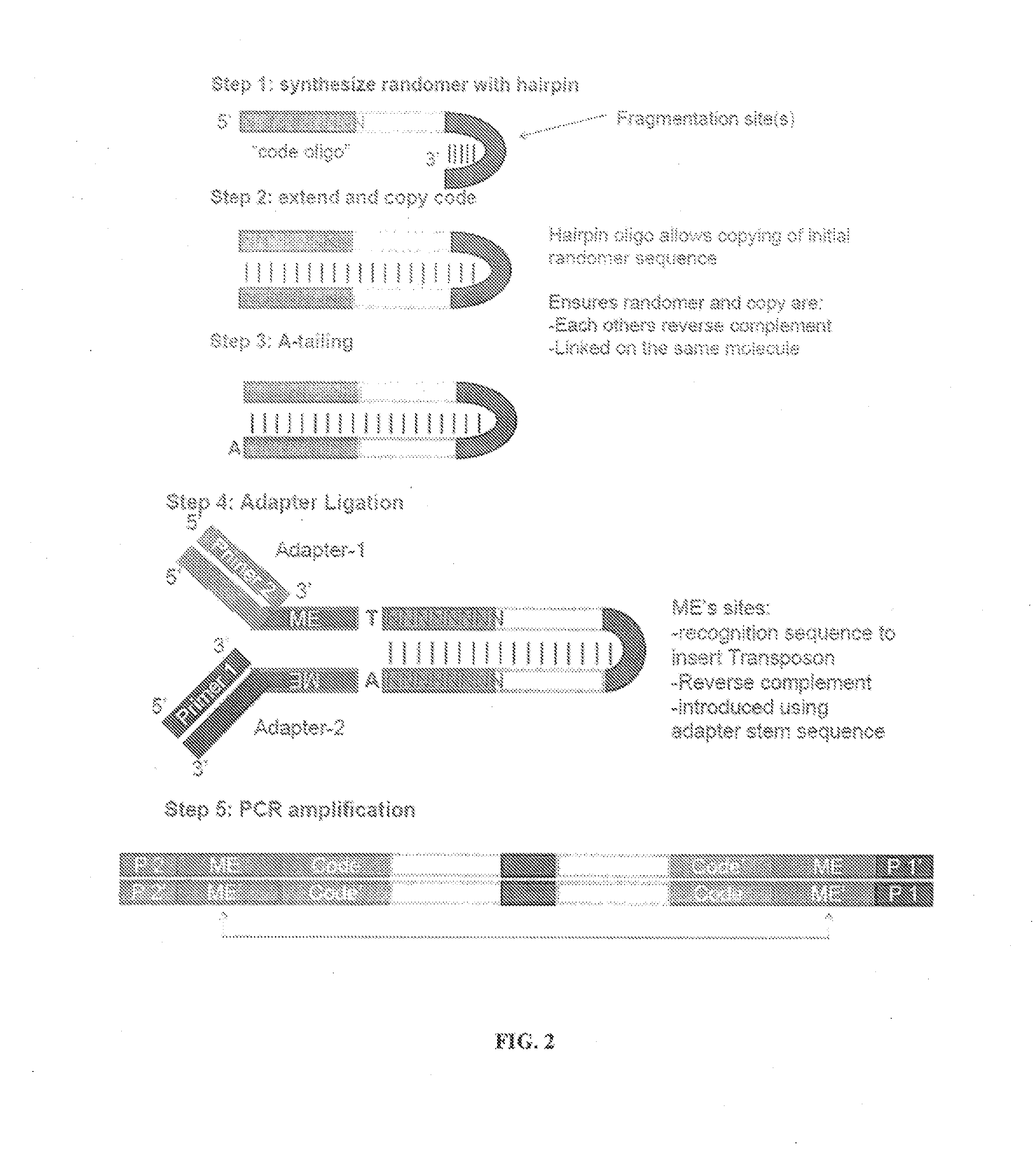Linking sequence reads using paired code tags
a technology of linking sequences and code tags, applied in the field of biology and genomics, can solve the problems of enormous information generated from a single sequencing run, and achieve the effect of reducing the number of target nucleic acid molecules
- Summary
- Abstract
- Description
- Claims
- Application Information
AI Technical Summary
Benefits of technology
Problems solved by technology
Method used
Image
Examples
example 1
Whole Genome Amplification Using Transposon Sequences
[0193]This example illustrates a method for uniform amplification of genomic DNA with random insertion therein of specific primer sites. Transposon sequences are prepared, each comprising a first transposase recognition site, a second transposase recognition site having a sequencing adaptor disposed therebetween, in which the sequencing adaptor comprises a first primer site and second primer site. The transposon sequences are contacted with genomic DNA in the presence of MuA transposase under conditions sufficient for the transposon sequences to integrate into the genomic DNA. The genomic DNA is amplified using primers that hybridize to the first primer site or second primer site.
example 2
Landmark Sequencing Methods Using Genomes with Increased Complexity
[0194]This example illustrates an embodiment for providing additional markers in a genome. Additional markers can be useful in genomes that include repetitive sequences during subsequent assembly steps to generate a sequence representation of the genome. Transposon sequences are prepared, each comprising a different barcode. The transposon sequences are integrated into genomic DNA in a transposition reaction. The genomic DNA comprising the integrated transposon is amplified by whole genome amplification. A sequencing library is prepared from the amplified template nucleic acids. Sequencing data is obtained from the sequencing library. Sequencing reads can include representations of one or more nucleic acids with the same barcode on each nucleic acid. Such nucleic acids are identified as containing sequences that overlap in a sequence representation of the genomic DNA. The sequencing reads can be assembled by identify...
example 3
Predicted average coverage using linked read sequencing strategy
[0195]Useable fragment lengths are modeled as a truncated exponential distribution so that the mean useable fragment length can be obtained by setting k=b / d, where d is the mean of the non-truncated exponential (the total fragment distribution) and b is the value for truncation (either 180 or 280 for 100 nucleotides and 150 nucleotide paired-end reads, respectively) and then calculating the mean of the truncated exponential as
E(f)=d(1−(k+1)e−k) / (1−e−k)
[0196]The proportion of useable reads is p=C(b)×(1−D(0,T)) where C is the exponential cumulative distribution function, T is the average repetitions of observing each fragment (num clusters) / complexity, complexity is the genome size times the number of genome copies diluted to divided by d, and D is the Poisson cumulative distribution function
[0197]Expected length of linked read is then (E(f)−9)×1 / (1−p)+9 where p is proportion of useable reads: 9 is subtracted from each re...
PUM
 Login to View More
Login to View More Abstract
Description
Claims
Application Information
 Login to View More
Login to View More - R&D
- Intellectual Property
- Life Sciences
- Materials
- Tech Scout
- Unparalleled Data Quality
- Higher Quality Content
- 60% Fewer Hallucinations
Browse by: Latest US Patents, China's latest patents, Technical Efficacy Thesaurus, Application Domain, Technology Topic, Popular Technical Reports.
© 2025 PatSnap. All rights reserved.Legal|Privacy policy|Modern Slavery Act Transparency Statement|Sitemap|About US| Contact US: help@patsnap.com



